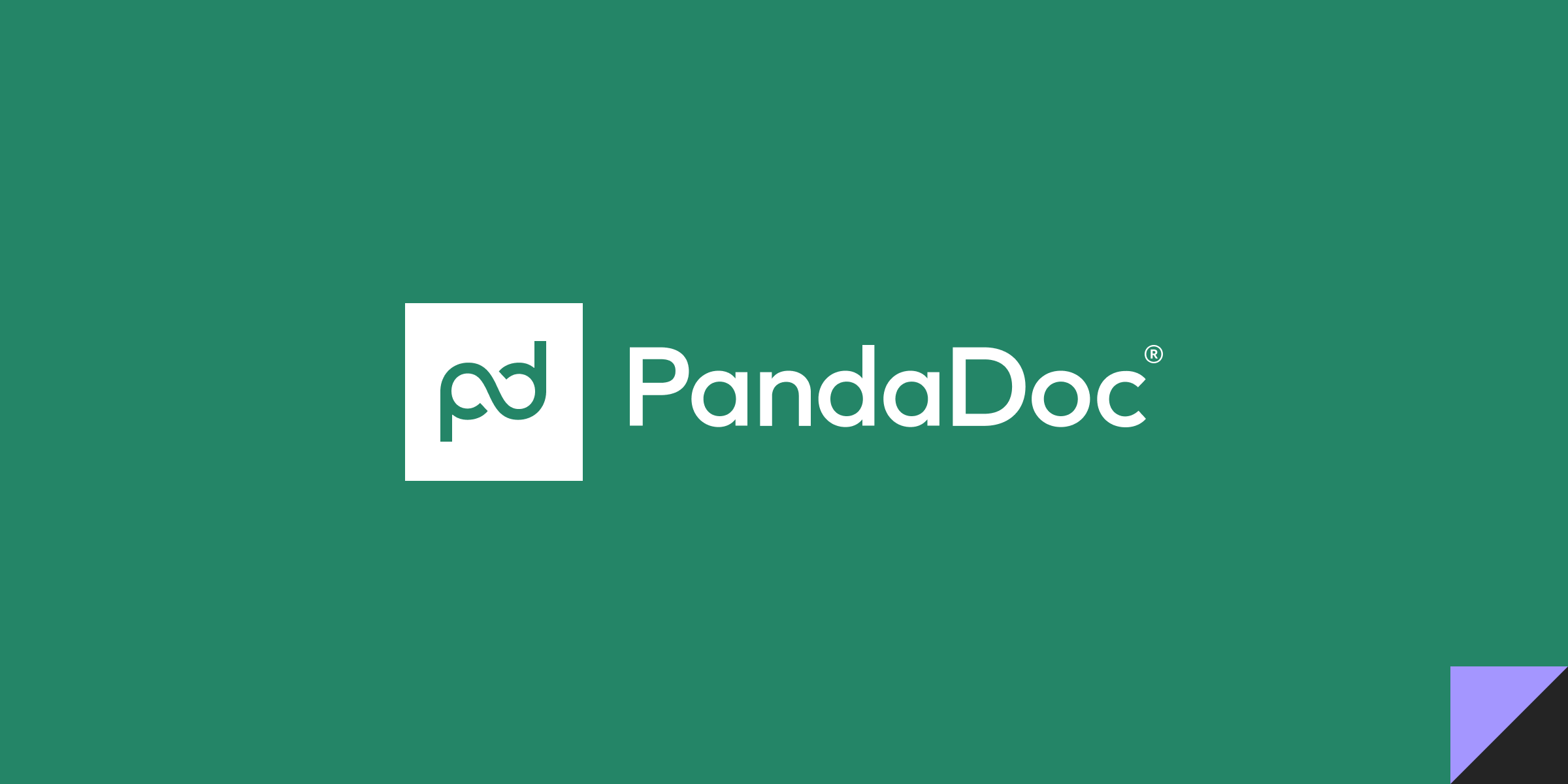
Being a customer support manager is a tough gig.
Not only do you have to keep your support quality up and make sure things stay caught up, but you also have to align support expectations between customers and your team.
Whether that's making sure you create a support scope or creating an internal or external guide for response times and expectations—managing your support team and customers takes hard graft.

One of the intricacies I'm sure you've encountered is a service-level agreement (SLA).
SLAs play a crucial role in customer service for several compelling reasons, with one significant aspect being their profound impact on fostering positive customer experiences.
SLAs set customer expectations regarding issue resolution, timelines, and overall service quality. This significantly contributes to customer satisfaction, fostering loyalty and improving the brand image.
Like checking into a new hotel room, you expect it to be clean, have specific amenities based on the star rating, and have a cancellation policy you signed up for.
Why? Because it's clearly defined when you book the room. You agree to the terms the hotel sets, and in turn, they provide those terms (most of the time).

An SLA is similar. You're providing your terms to the customer, and if the customer accepts, you have to abide by them or accept the penalties listed in the SLA.
There are different SLAs, of course—whether they're 1-on-1 with customers, tiered SLAs for different types of customers, a basic SLA for all signups, or an internal SLA for your support team to rally them towards a common goal 🚩
As a customer service manager, you probably know meeting SLAs can be a daunting task.
To simplify this, incorporating a Knowledge Base into the mix can be a handy tool since you've likely already created one.
This post will look into how a Knowledge Base can be incorporated into your customer service SLAs. We'll also explore how a Knowledge Base will help customer service teams meet SLAs.
But before that here's a brief introduction to SLAs in case you don't know.
What is an SLA Anyway?
A typical definition of a Service Level Agreement (SLA) is a formal contract mutually agreed upon by the service provider and a customer.
This document outlines the specific services to be rendered by the provider to the customer. SLAs make sure that everybody is on the same page regarding what to expect in terms of quality, response times, and other important aspects of the service.
Sometimes customer service SLAs are separate from other SLAs, or sometimes they're incorporated into a broader, more general SLA.

PandaDoc has a helpful template for creating an SLA
You probably already have a general SLA but it's named as terms or terms of service. Without one you can get into some tricky situations when it comes to refunds, termination of service, and other legal sticky spots.
It's always worth taking legal advice when dealing with SLAs since the wording matters a lot and you could find yourself dealing with problems you could never have predicted.
Different Types of SLAs
I mentioned the different types of customer service SLAs briefly beforehand but let's go into a little more detail:
🙋 Customer-based SLA
Focuses on meeting the specific needs and expectations of individual customers.

This can often come from sales where they have a long negotiation period with an enterprise and need to "win" a deal.
🍽️ Service-based SLA
Focuses on the specific service provided by you to all customers.
The SLA outlines the commitments related to that specific service, for instance, providing a clean room just like IHG does with their Clean Promise.
🥞 Multi-level SLA
Focuses on tailoring promises or agreements to customers depending upon the level of service they seek.
For example, if you offer an enterprise plan one of the perks of this could be a promise of a certain level of onboarding (often called white-glove onboarding).

💼 Internal SLA
An internal SLA is a set of promises made in your organization.
This SLA outlines the responsibilities among different team members to keep to specific goals so that work gets done, customers stay happy, and things get shipped.
Why Create a Customer Service SLA?
You might be wondering—what's the point of creating an SLA for your customer service if it seems like such hard work? 😓
Well, your service will already include a general SLA-type agreement when a customer signs up, which, as I mentioned earlier, is usually inside your terms of service.
But a 1-on-1 customer agreement or tiered agreement—why bother?
Customer support SLAs help maintain customer satisfaction. Setting and meeting your SLAs builds brand trust and fosters customer loyalty.

Our content in monthly bitesized emails
Get our best content delivered straight to your inbox.
SubscribeSMB and Enterprise-type businesses often have an initial distrust of services since they depend so heavily on them, so having an SLA in place puts minds at ease and makes sure you both understand exactly what you'll provide.
It also showcases operational excellence and puts your business in a competitive position by offering goal-centric customer service.
Meeting SLAs to maintain excellent customer satisfaction and long-term relationships can be a handy tool to increase customer satisfaction and close sales.
Utilizing Your Knowledge Base in Your Customer Service SLA
Incorporating your Knowledge Base into your SLA can provide you a decent buffer in response times you agree to and can divert potential tickets.
If you're a customer support manager and looking to incorporate a Knowledge Base in your SLA here are some tips on how to make the most out of your self-serve support:
Specify Your Knowledge Base in Your Onboarding Agreement
Whether using an internal or external SLA, you can specify in your customer service SLA how your Knowledge Base is an important tool for training and onboarding new customers.
Rather than offering 1-on-1 video onboarding in your SLA, consider offering a special onboarding documentation pack or course where customers (be it all customers or tiered customers) will have access to best practices, on-demand videos, and templates inside your Knowledge Base.

Even for single-customer SLAs, offering a Knowledge Base program where you highlight best practices for their specific industry and use-case can not only provide tools the customer can use during their lifecycle but also ease the strain on your support team's time.
Highlight How Your Knowledge Base Meets Support Targets
Specify in your SLA that your Knowledge Base is helpful in meeting response time and resolution time targets in customer support.
For example, you could mention that if the customer hasn't found an answer in your Knowledge Base and when they get in touch, you will respond in 12 hours.
Your team can also make the response times far quicker by using your Knowledge Base in support replies.
Our tips for using your Knowledge Base articles inside your support software. Full post over here.
A quick search for the information that your customers seek from the Knowledge Base can address queries, resulting in quick response and resolution of issues. Encourage your team to leverage the knowledge base for quick resolution of queries.
Include Regular Updates of the Knowledge Base
Highlight the significance of reviewing and updating the Knowledge Base content in your SLA.
For example, you could include that you'll strive to keep the documentation accurate and if the content is out of date after feedback for more than 90 days, you'll reimburse part of your customer's invoice.

Regular updates guarantee that the information within the Knowledge Base remains current and relevant. This commitment ensures that the information provided to your customer is always up-to-date.
Highlight the Importance of Customer Self-Service
Emphasize in your SLA that the Knowledge Base empowers customers to autonomously solve their issues without the team's intervention.
In the SLA, specify that the customer support team can guide customers to solve the issues independently by linking them to articles available in the Knowledge Base.
Self-serve isn't just about your Knowledge Base either. It can include videos, self-start guides, and more.

Incorporating these elements ensures that the Knowledge Base is seamlessly integrated into your SLA. Leveraging these elements to its fullest will help deliver high-quality delivery service to your customers.
Popular SLA Support Metrics and How a Knowledge Base Can Help
Okay so we've gone through how a Knowledge Base can assist with meeting SLAs, but what type of customer service SLA metrics exist, and how can a Knowledge Base specifically help with them? Let's take a look.
⏰ Time to First Response
Time to first response is a popular option because it puts the customer's mind at ease when trying to resolve problems. If you customer knows it won't take days for you to respond, they'll be more willing to signup long-term.
Your Knowledge Base help in this situation by ideally stopping the ticket from being created in the first place, or by making it easier for your support team member to come up with self-serve resources in the first response.
🎫 Average Handle Time
Your customer support agents will need time to resolve tickets. You and/or your customers may want a time-limit on this because time costs money.
Your Knowledge Base can be handy in this situation because the agent can find the answer in your Knowledge Base rather than looping in teammates and waiting for a reply back, especially if you have an internal Knowledge Base.
📖 Number of Customers Who Use Self-Service
This one is pretty self-explanatory since you need a Knowledge Base to even start tracking this metric.
You could provide a target metric in your SLA that guarantees that a certain percentage of queries will be answered in your Knowledge Base.
🔐 Privacy and Safety
You may want to include a guarantee in your SLA that your service will be compliant with a certain accreditation or framework like GDPR, Privacy Shield, or HIPAA.
Your Knowledge Base can help by documenting what measures you've taken, how they're implemented, and any supporting evidence like certification.
Best Practices for Your Knowledge Base to Help Your Support Team Meet Their SLAs
Incorporating your Knowledge Base into your customer support SLA is great and all, but to get the most out of this you'll need to make sure your Knowledge Base is the best it can be so you meet those deadlines.
Document Common Queries ASAP
With response times being, well, timed, you'll want to ensure that every ticket has a quick reply. And there's no better way to do that than provide a link to a Knowledge Base article.
This will significantly reduce the resolution time and reduce the burden on your support team.
Once you've got a couple queries about the same topic consider whether it can be documented.
Streamline Content Structure
Your Knowledge Base is a powerful tool, but if it's difficult to navigate it becomes a little less useful.
Make sure your categories and subcategories make sense. Depending on your service, you may want to split it out based on customer types, plan, or by your main features/products.

Utilize user research, and user experience surveys, and user testing to see how people interact with your content's structure. It'll be clear after a few hundered sessions where the problems lie.
Encourage User Feedback
Finding the pain points of your documentation can be tricky, especially when you're managing a whole support team.
This is where customer feedback comes into play. By getting useful feedback on specific articles you can ensure they're accurate, up-to-date, and help meet your customer support SLAs.
Measure Impact of Your Knowledge Base on Your SLAs
Part of making a Knowledge Base successful is updating it, improving it, and measuring its impact.

To ensure your Knowledge Base is helping meet your SLAs, make sure to measure key metrics inside your Knowledge Base software like ticket deflection, search term success, and number of views.
Streamline and Meet Your Customer Service SLAs
Just like a fantastic support team, an accurate well thought-out Knowledge Base can help you grow your customer base, increase customer satisfaction, and make your job easier. SLAs help customer support managers guide teams to align with customer expectations
Creating customer support SLAs help win the trust of larger companies and keep them around for years to come, but meeting those SLAs isn't easy for you or your team.
A Knowledge Base can help you meet your SLAs (or even shape them) by making ticket responses quicker, reducing burden to begin with, and providing a better onboarding experience for your customers.
Use your Knowledge Base to your advantage and grow your company by setting quality customer expectations that you can not only meet, but exceed.

